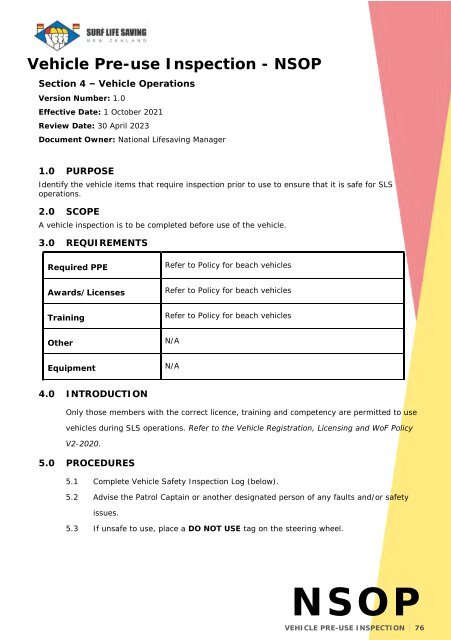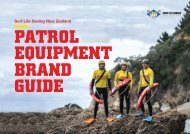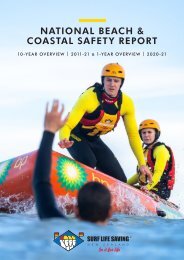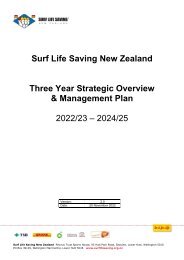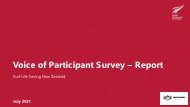National Standard Operating Procedures - Jul 2022
Full NSOP Manual
Full NSOP Manual
Create successful ePaper yourself
Turn your PDF publications into a flip-book with our unique Google optimized e-Paper software.
4.3 Identify the location of the nearest fire extinguisher and ensure that it is suitably<br />
charged, current and within 5 metres of the fuel mate if required. If more than 5 metres<br />
from the refuelling site, temporarily locate it adjacent to the refuelling site.<br />
4.4 Ensure there are no naked flames or persons smoking within 10 meters of the refuelling<br />
site.<br />
4.5 Remove the bladder from the IRB, or fuel locker.<br />
4.6 Select the correct IRB fuel from the locker.<br />
4.7 Ensure that oil has been added to the fuel. The fuel should be a blue/green colour when<br />
mixed. If it has not been mixed, mix oil into the fuel at a ratio of 50:1.<br />
4.8 One person should carefully open the fuel bladder and hold the bladder in an upright<br />
position while the opening is kept elevated from the underside (bottom) of the fuel<br />
bladder.<br />
4.9 The second person should open and prepare the fuel canister by attaching the nozzle or<br />
arranging the funnel in the correct position.<br />
4.10 When both persons are ready and prepared, fuel can be slowly poured into the bladder<br />
from the fuel canister.<br />
4.11 Continue filling until the required quantity of fuel has been transferred into the bladder.<br />
4.12 Before securing the bladder cap, remove all air from the bladder by placing the bladder<br />
on a flat surface, while keeping the opening slightly elevated and, if necessary, gently<br />
push any air pockets towards the opening before securely fastening the cap. Be careful of<br />
fuel bubbling out and splashing up in the face of the person holding the bladder.<br />
4.13 Check the bladder for leaks. If there are any leaks, immediately pour the fuel back into<br />
the fuel canister using a funnel. Isolate the damaged bladder to prevent use, and inform<br />
the Patrol Captain and/or other designated person in keeping with CSOPs.<br />
4.14 Wipe off any minor fuel spills from the bladder. For large spills, refer to the CSOPs for the<br />
location and application of the fuel spill kit.<br />
4.15 Place the bladder in the bow of the IRB and thread the fuel line through the loops down<br />
the port side pontoon, then check the bayonet is clean and free of sand before<br />
connecting it to the motor.<br />
4.16 Return the fire extinguisher to its correct location, ensuring that the extinguisher is<br />
inverted prior to positioning in order to prevent the powder caking.<br />
4.17 Return fuel canister and fuel mat to fuel storage locker.<br />
4.18 Wash any skin exposed to fuel with warm soapy water.<br />
NSOP<br />
REFUELLING IRB BLADDER 69


